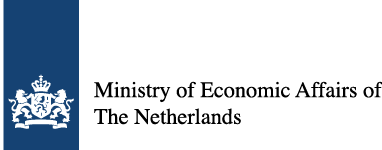
A rapidly graying population will bring a lot of strain to the care industry, where nurses will have a hard time keeping up with the extra pressure. In this project, funded by the Dutch Ministry of Economic Affairs and carried out by a consortium of research institutes and private companies, I was tasked with analyzing the user needs of nurses and care receivers, and to identify use cases for which remotely operated robots could lend a helping hand as an alternative to the shortage of workforce.
In order to understand the context in which the remotely operated robot was to work and the type of tasks that it would be required to perform, we wanted to understand the needs of the users who would benefit from such technology. This meant gathering insights from two target groups: Nurses and Care receivers. Since the first iteration of the robot was to be deployed together with ZuidZorg (a company that provides assistance to elderly and disabled people to live independently) we used their expertize to approach some target users.
Diary studies – The everyday context of care-receivers
We wanted to understand care-receivers. Not only what they do in their day-to-day and what their homes look like, but also how they perceive their own limitations. To this end, I asked a few participants to keep a diary for a week, specially designed to gather information about their life, their hobbies, the difficulties they face and the things they enjoy. I also asked them to take pictures of their homes, including any electronic device they use, so we could better understand their environment and attitude toward technology.
Workshop with elderly and disabled people
Having analyzed the diaries for behavior and contextual patterns, I used these insights as a starting point for a workshop with potential care-receivers. Our goal was to identify the activities that they currently find difficult to perform on their own. I asked a lot of questions, and we wrote and clustered a lot of sticky notes to structure the information. I also asked them to use a set of cartoon cut-outs to imagine what kind of superpowers would help them live a more pleasant life. This helped to trigger participants into talking more about their underlying wishes.
Understanding nurses
To understand the point of view of caregivers, their job, particular needs, and the problems they face, I organized a workshop with nurses from Zuidzorg. During a half-day session, we made an inventory of activities regularly performed while assisting their patients at home. We categorized them, and I asked the nurses to rate each one of them for “Complexity” and “Time it takes”. Finally, I asked them to vote on the activities that were considered pleasant and those they don’t like to perform. To round off the day, I used the same cartoon cut-outs of the previous workshop to ask the nurses to imagine what kind of superpowers would help them perform their job better.
Collected insights
The research helped us understand that care-receivers don’t mind getting help with the more complex tasks of their daily life, but for their feeling of independence they would prefer if they didn’t have to rely on nurses for frequent small chores or simple tasks. This aligns perfectly with the preferences of the nurses, who would like to concentrate more on the difficult activities and find repetitive tasks boring and taking too much of their time. The information collected was used to define the right set of activities that the first iteration of the robot should be able to perform.
The added value of the research
The approach I facilitated helped the consortium to identify the right scope for the product and to focus their efforts more accurately based on direct feedback from the users they are targeting. The cartoon superpowers exercise I designed was particularly helpful in allowing users to imagine the sort of augmented capabilities that a robot could facilitate, without explicitly mentioning robotics. By doing so, we avoided their view from being constrained by any perceived limitations of the technology.

